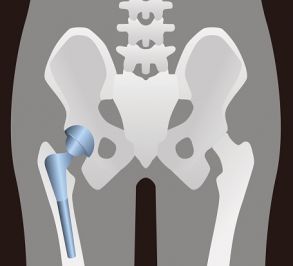Why hips wear out
With aging, arthritis becomes the most common cause of hip pain and mobility problems. Other problems that lead to hip replacement include fractures and the death of bone in the hip.
Osteoarthritis
The most common type of arthritis is chronic “wear and tear” osteoarthritis. The hallmark of osteoarthritis is the age-related wearing away of the soft, slippery cartilage that coats the ends of bones and protects joints. Eventually, bones may start to rub against each other. This can cause pain, stiffness, and swelling that limits your ability to exercise, work, travel, and live independently.
Hip arthritis symptoms
The symptoms of osteoarthritis depend on how far the disease has advanced and what parts of the joint are affected. Common signs of hip arthritis include
- reduced range of motion in the hip
- pain in the groin, buttocks, or inner thigh
- pain when you rotate the hip inward
- stiffness when you wake up and after you’ve been sitting for a while
- severe pain when you walk or put weight on the affected hip
- limping or other changes in walking
- difficulty putting on your socks and shoes
- difficulty getting in and out of a car.
Arthritis and body weight
There’s a clear link between excess body weight and higher risk of hip osteoarthritis, probably in part because of the extra load on the joints. For example, each extra pound of body weight exerts about five pounds of additional pressure on the hips while climbing stairs. Body mass index (BMI) is a measure of body fat based on height and weight. You can check your BMI using the calculator at www.health.harvard.edu/bmi. BMI has been used to define the following thresholds:
- 18.5–24.9: normal weight
- 25–29.9: overweight
- 30–39.9: obesity
- 40 and higher: extreme obesity.
Excess body weight alone does not appear to cause osteoarthritis. However, once cartilage breakdown begins, the extra strain on the joints can accelerate the process. Research has also shown that obesity (a BMI of 30 or higher) raises the risk of complications from joint replacement, such as deep infections. Such infections are a leading cause of implant failure, which requires a do-over(called revision surgery) to replace the ailing joint.
A practice guideline by the American Academy of Orthopaedic Surgeons recommends that people with a BMI of 40 or higher participate in a weightloss program before having total joint replacement. Research suggests that getting BMI below 35 can substantially reduce the risks of joint replacement linked to obesity.
Because of these medical issues, surgeons may be reluctant to offer hip replacement to obese patients. On the other hand, even significantly overweight people experience a better quality of life after hip replacement because of reduced pain and improved mobility and independence.
Hip fracture
Hip fractures from falls typically occur near the top of the thighbone (femur). If the pieces of broken bone don’t move out of alignment, it may be possible to shore up the break with metal plates and screws to allow it to heal properly. If the bone has moved out of place, your surgeon may replace the broken portion of the femur with a metal implant, a procedure called a partial hip replacement or hemiarthroplasty. In some cases, a broken hip can lead to a total hip replacement.
Osteonecrosis
A significant number of hip replacements in the United States are performed to treat a condition called osteonecrosis of the hip. Osteonecrosis means death of bone. It can happen when an injury, like a fracture or dislocation, reduces blood supply to the head of the femur. As a result, the bone dies and the head of the femur may partially collapse.













